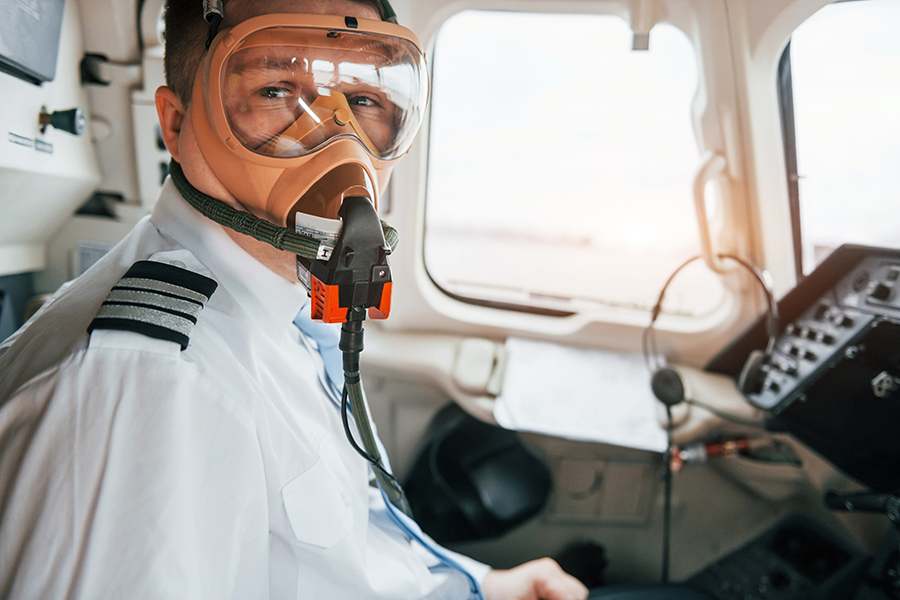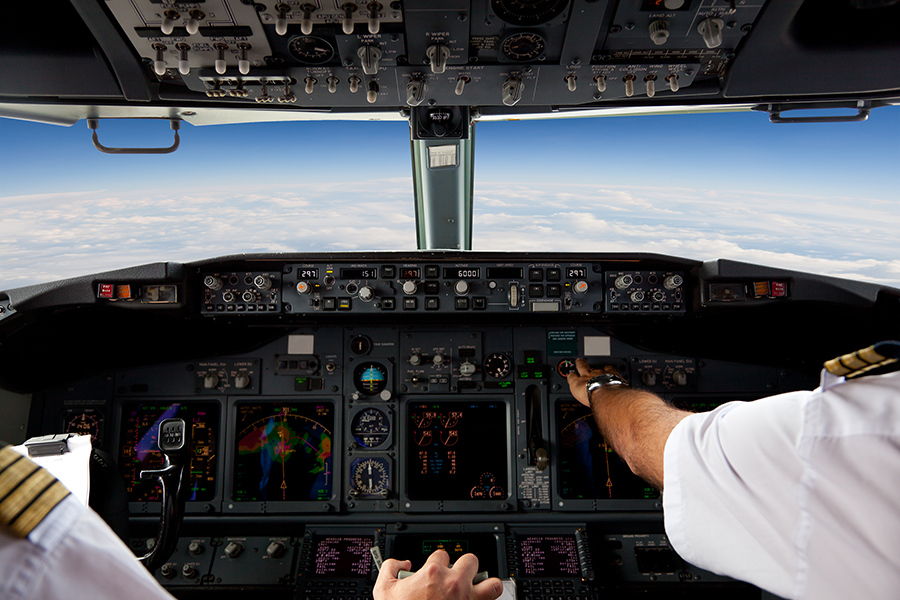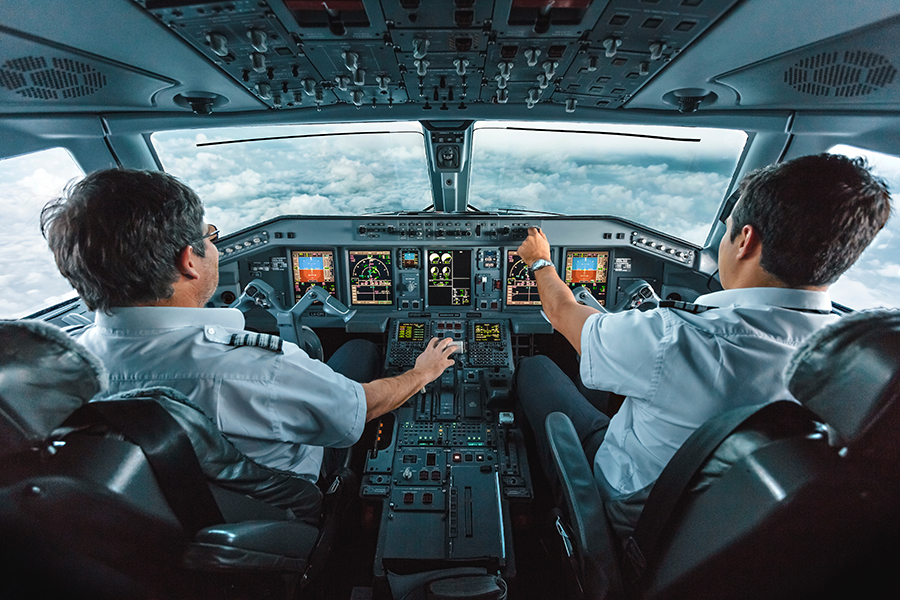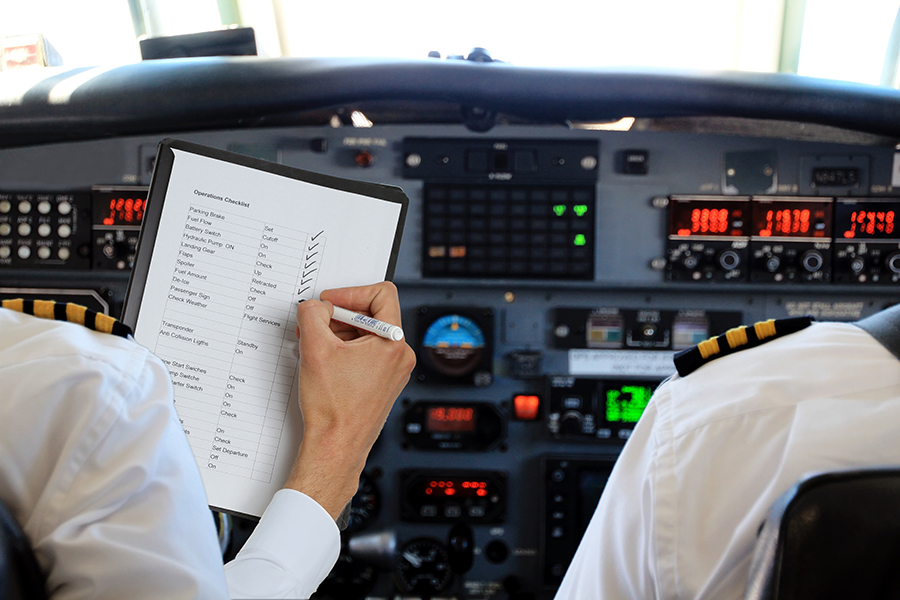-
What is Hypoxia?
-
What Causes Hypoxia?
- Hypoxic Hypoxia
- Hypemic Hypoxia
- Stagnant Hypoxia
- Histotoxic Hypoxia
-
Hypoxia and Pilots
-
What Causes Hypoxic Hypoxia?
-
Signs and Symptoms of Hypoxia
-
How Can Hypoxia Happen in Flight?
- Scenario 1: Flying Without Supplementary Oxygen
- Scenario 2: Decompression of the Cabin
- Scenario 3: Improper Use of the Pressurization System
-
FAA Supplemental Oxygen Rules
-
How to Avoid Hypoxia
- 1. Use Supplemental Oxygen from as Low as 10,000 feet.
- 2. Understand the Signs and Symptoms of Hypoxia
- 3. Recognize Symptoms of Hypoxia in Others
- 4. Be Cautious in High-Risk Scenarios
- 5. Monitor the Cabin Altitude
- 6. Use Safeguards
-
What to Do If You Think You Have Hypoxia
-
Conclusion
Hypoxia is a potentially deadly condition that can occur in aviation. Hypoxia can occur during flight at high altitudes and can affect pilots and passengers alike.
This article will provide an overview of hypoxia, how it is caused, and the signs and symptoms to look out for. It will also discuss the steps that should be taken to prevent and recover from this condition so that pilots and passengers can remain safe while operating at high altitudes.
What is Hypoxia?
Your body requires oxygen to function. When the body isn’t receiving enough of it, a condition known as hypoxia can occur.
Your brain is particularly at risk when it doesn’t receive enough oxygen. When your brain doesn’t get enough oxygen, it reduces your ability to make decisions, inhibits motor skills, and eventually causes you to faint.
What Causes Hypoxia?
There are four types of hypoxia, each with its own unique cause:
Hypoxic Hypoxia
A lack of oxygen available to the body causes hypoxic hypoxia. This can happen when there is a decrease in the partial pressure of oxygen at high altitudes.
Hypemic Hypoxia
Hypemic hypoxia is a condition in which the blood cannot transport enough oxygen to the cells throughout the body. There are many possible causes of hypemic hypoxia, such as severe bleeding or disease. Carbon monoxide poisoning is the most common form of hypemic hypoxia, which means that the blood’s hemoglobin can’t bind with and transport oxygen.
Stagnant Hypoxia
Stagnant hypoxia results from the lack of movement of oxygen-rich blood through the lungs. This can occur due to high g-forces.
Histotoxic Hypoxia
Histotoxic hypoxia is caused when the body’s cells can’t use oxygen efficiently. Alcohol and other drugs can affect the body’s ability to use oxygen, causing histotoxic hypoxia.
Hypoxia and Pilots

As pilots, the most relevant (and dangerous) form of hypoxia we may experience is hypoxic hypoxia (the lack of oxygen available to the body, often due to the lack of oxygen at high altitudes).
Hypemic hypoxia from carbon monoxide and stagnant hypoxia due to g-forces are also relevant, although less common, forms of hypoxia pilots may experience.
What Causes Hypoxic Hypoxia?
Outside air pressure forces oxygen into your lungs when you take a breath. But as you climb to higher altitudes, the atmospheric pressure decreases and lessens the amount of oxygen that gets pushed into your bloodstream. The percentage of oxygen in the air doesn’t change with altitude – it’s still 21 percent. But at 18,000 feet above sea level, the atmospheric pressure is only half what it is at sea level.
In other words: Hypoxic hypoxia can be caused by the decrease in partial pressure of oxygen with altitude, preventing your lungs from feeding oxygen into your bloodstream.
Signs and Symptoms of Hypoxia
The signs and symptoms of hypoxia can vary from person to person, but some common ones include the following:
- A feeling of euphoria
- Confusion or disorientation
- Headache
- Cyanosis (when your lips and fingernails turn blue)
- Drowsiness
- Impaired judgment
- Loss of consciousness
- Dizziness
- Tingling
- Tunnel vision
- Limp muscles
Hypoxia is a sinister condition because it clouds your judgment without you realizing it.
Furthermore, many people’s first symptom is a feeling of euphoria that gives them a false sense of security. Combined, these two factors have disastrous potential in an aircraft.
How Can Hypoxia Happen in Flight?

There are three likely scenarios where crew and passengers are at risk of hypoxia:
When above 10,000 feet:
- Flying for an extended period without a supplementary oxygen system.
- Decompression of the cabin (slow, rapid, or explosive decompression).
- Improper use of the pressurization system, leading to a cabin altitude of over 10,000 feet.
The higher you climb in an unpressurized airplane, the less oxygen gets into your bloodstream.
The catch is that atmospheric pressure decreases exponentially. This exponential decrease means that the time of useful consciousness decreases significantly with a slight increase in altitude as you climb.
Some aircraft (like airliners) pressurize the interior (often only the cabin and baggage compartment) to avoid hypoxia at high altitudes.
By pressurizing the air inside the cabin, an aircraft can “simulate” a lower altitude where the air pressure is greater.
Scenario 1: Flying Without Supplementary Oxygen
The first and simplest scenario where hypoxia can occur is if an unpressurized aircraft climbs above 10,000, and the crew or passengers don’t use supplementary oxygen.
Unpressurized aircraft are allowed to operate at altitudes where hypoxia can occur, but the crew and passengers must use supplementary oxygen (we’ll explore the rules for supplementary oxygen later in this article).
Supplemental oxygen can take many forms but is most often a canister of oxygen and an oxygen mask.
Pilots must be more careful when flying at high altitudes while using supplemental oxygen, compared to flying at high altitudes in a pressurized aircraft.
When using supplemental oxygen, the pilot must monitor the oxygen content in their blood to ensure that they receive enough oxygen through the supplemental system.
A pulse oximeter, placed over the finger to measure oxygen saturation, is used to ensure the pilot or passengers are receiving enough oxygen.
Conversely, in a pressurized aircraft, the pilot only needs to monitor the cabin pressure (often measured as “cabin altitude”) via an instrument.
Monitoring cabin pressure directly is more straightforward than measuring individual oxygen saturation and managing supplemental oxygen systems. This leads to a lower likelihood of involuntary exposure to hypoxia.
Scenario 2: Decompression of the Cabin
There are three types of decompression, classified by the speed at which the cabin decompresses to the ambient outside pressure:
- Slow decompression: Over 10 seconds.
- Rapid decompression: Between 1 and 10 seconds.
- Explosive decompression: Less than a second.
Slow decompressions are dangerous because you might not realize it’s happening until you become hypoxic.
With rapid and explosive decompressions, the time available to put on supplemental oxygen is reduced significantly, so every second counts.
Scenario 3: Improper Use of the Pressurization System
Modern pressurization systems are reliable and relatively simple to use, but humans will always find a way to make mistakes.
If a pressurization system is not turned on or the incorrect cabin altitude is selected, the crew and passengers will be at risk of hypoxia.
Most aircraft have warning systems in place if the cabin altitude exceeds a predetermined altitude (usually 12,000 feet). These warning systems allow pilots to correct any errors in the pressurization system before reaching a dangerous altitude.
Furthermore, the pressurization warning systems can allow pilots to take action and descend if the pressurization system does not perform as it should.
FAA Supplemental Oxygen Rules
The FAA’s rules regarding when you or your passengers need to use supplemental oxygen are pretty easy to remember:
- As a crew member, you must use supplemental oxygen when operating above 12,500 feet MSL cabin pressure altitude for more than 30 minutes.
- Above 14,000 MSL cabin pressure altitude, you must use supplemental oxygen regardless of how long you spend above 14,000 feet.
- Above 15,000 MSL, all passengers require supplemental oxygen.
These rules won’t necessarily prevent you from becoming hypoxic at a lower altitude, however.
Hypoxia can occur when operating above 10,000 feet. Be extra vigilant when operating in these altitudes. Compliance does not necessarily mean safety.
How to Avoid Hypoxia

Hypoxia presents a significant danger to pilots and passengers.
As pilots, it is ultimately our responsibility to ensure our physical and mental fitness when piloting an aircraft.
So, how can we avoid falling victim to hypoxia?
Here are five tips to prevent you from succumbing to hypoxia:
1. Use Supplemental Oxygen from as Low as 10,000 feet.
The best way to avoid hypoxia is to use supplemental oxygen as soon as you pass 10,000 cabin altitude.
If you use supplemental oxygen correctly above 10,000, your chances of becoming hypoxic are low.
2. Understand the Signs and Symptoms of Hypoxia
It’s essential to be aware of the signs and symptoms of hypoxia. Knowing what to look for can give you more time to react before it’s too late.
3. Recognize Symptoms of Hypoxia in Others
In addition to recognizing the signs of hypoxia in yourself, you should also be aware of the symptoms in passengers and other crew members.
If someone appears to be exhibiting any symptoms of hypoxia, inform them and take action immediately.
4. Be Cautious in High-Risk Scenarios
Be extra aware of the risk of hypoxia when operating in high-risk scenarios, such as at high altitudes or when using supplemental oxygen.
5. Monitor the Cabin Altitude
Monitoring cabin altitude in a pressurized aircraft effectively ensures you and your passengers don’t experience hypoxia.
If your cabin altitude is below 10,000 feet, you’re likely not at risk of hypoxia.
6. Use Safeguards
Safeguards, such as oxygen masks and warning systems, provide a valuable layer of protection against hypoxia.
These safeguards can help you take action before it’s too late if something goes wrong.
Early warnings of hypoxia, like a high cabin altitude warning or a low blood oxygen saturation reading, can provide you with valuable time to correct a potentially dangerous scenario.
What to Do If You Think You Have Hypoxia
If you start to feel the symptoms of hypoxia, you must take immediate action.
The first step is putting on your oxygen mask and breathing supplemental oxygen. Supplemental oxygen will help reduce hypoxic symptoms quickly.
In addition, reduce your altitude below 10,000 feet and contact air traffic control to request a descent below 10,000 feet. Depending on how high above 10,000 feet you are, you may have to declare an emergency and begin an emergency descent.
The amount of time you have before falling unconscious will depend on the altitude and rate of decompression.
In some cases, you may only have seconds of useful consciousness to get supplemental oxygen before it’s too late.
Conclusion
Hypoxia is a serious threat to pilots and passengers. It is essential for those operating in high-altitude areas to understand the signs and symptoms of hypoxia and how to avoid it.
By following these tips, you can reduce your risk of hypoxia and ensure greater safety for everyone on board.
Remember, to ensure safety, use supplemental oxygen above 10,000 feet and be mindful of the signs and symptoms of hypoxia.
Taking the proper precautions and being extra vigilant in high-risk scenarios can help ensure a safe flight for all aboard your aircraft.




